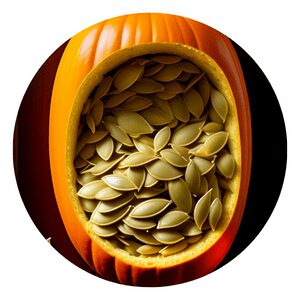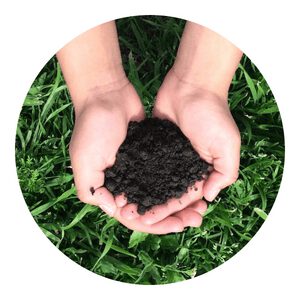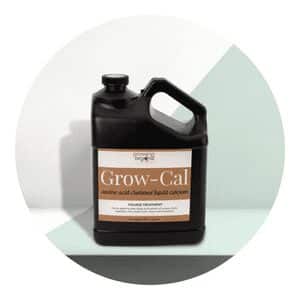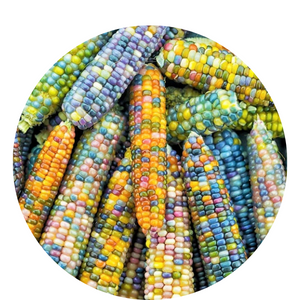What Equipment Do I Need to Start a Vegetable Garden?
Growing your own fruits and vegetables is becoming more popular than ever.
Whether you’re looking to save money, reduce food waste, or simply enjoy the pleasure of growing your own food, starting a vegetable garden is an easy and rewarding endeavor.
But before you get started, there are some essential pieces of equipment needed to ensure the success of your vegetable garden.
In this article, we will discuss what equipment you need to get started on your journey into gardening.
Equipment Menu
The benefits of growing your own vegetables
Growing your own vegetables has a number of benefits, including access to fresh produce, lowered grocery bills, and improved self-sufficiency.
To start a vegetable garden at home, the following equipment may be needed:
seeds or seedlings, soil or compost, fertilizer (if necessary), planters and pots for container gardening (if desired), hoses and sprinklers for watering plants if no irrigation system is available, tools like trowels and shovels for preparing the soil or planting seeds/seedlings.
Additionally, trellises or stakes may be necessary to support certain vegetables such as tomatoes or pole beans.
A wheelbarrow can be useful for moving soil and other supplies around the garden.
Protective gear like gloves should also be worn while working in the garden.
Finally, any pest control measures that are needed should also be taken into consideration when starting a vegetable garden.
With these items on hand and some careful planning, you can have an abundant harvest of fresh produce all season long!
Basic equipment needed to start a vegetable garden
Gloves are essential for vegetable gardening, as they will protect your hands from soil and pests.
Look for a pair of tough leather or rubber gloves that fit snugly on your hands and won’t tear easily.
They should be easy to clean after each use and well-ventilated so your hands don’t overheat while wearing them.
Another important piece of equipment is a shovel.
A good shovel should have a solid wooden handle that won’t bend or break easily, as well as an ergonomic design that makes it comfortable to use.
The blade should be made of sturdy metal that can handle hard digging in the ground, and it should also have an angled tip to help you dig deep into the soil with ease.
Finally, you’ll need a hoe for weeding and cultivating the soil.
A hoe with a wide head is best for removing weeds quickly without damaging nearby plants. It should also have an angled design so you can easily reach underneath plants without having to bend too far over.
Look for one made of durable steel with a comfortable handle that won’t slip in your hand during use.
Different types of garden beds
Traditional in-ground beds, sometimes referred to as “row gardens”, are the most common type of garden bed.
They can be created by simply digging out a raised area in the ground and preparing it with a soil mix specifically formulated for vegetable gardening.
Tools such as shovels, hoes, rakes and wheelbarrows will be needed to dig out the bed and move soil if necessary, while gloves and sturdy shoes should also be worn to protect your hands and feet.
Raised beds provide an alternative approach to traditional in-ground beds.
These are constructed from wood or cement planks that are placed around a frame filled with soil specifically designed for vegetable gardening.
Tools such as saws, hammers, screws or nails will be needed for construction purposes while gloves should also be worn when handling these materials.
Container gardens offer another option for those looking to start their own vegetable garden without having to break ground on their property.
Containers come in many shapes and sizes depending on the types of vegetables you wish to grow.
An eager gardener, I'm on a mission To fulfill my cultivation vision Let's see what equipment do I need To make sure I can get off the lead? A spade and rake for gardening bed, Gloves to protect my hands from dread, Seeds and soil mixed together instead, And an ample supply of water to be fed.
Chappy The Gardener
Options for irrigation
Soaker hoses are a great option for vegetable gardens as they provide gentle, consistent watering and can be easily moved.
The water soaks into the soil slowly, reducing runoff and allowing the soil to absorb more water.
They are also easy to install and require minimal maintenance.
The downside is that they may not reach all parts of your garden, depending on its size.
Drip systems are another effective way of irrigating your vegetable garden – they apply water directly to the plants’ roots which allows for maximum absorption.
In addition, you can control how much water is delivered to each plant as well as customize it based on each plant’s specific needs.
However, drip systems can be expensive and require regular maintenance in order to ensure that they are working properly.
Sprinklers offer more coverage than either soaker hoses or drip systems but require more energy and may lead to higher levels of evaporation due to the larger amount of surface area covered by them.
They do make it easier to manage large areas quickly but need frequent adjustment in order to ensure that only necessary areas are being watered consistently.
How to determine the best location
When determining the best location for your garden, it’s important to consider the amount of sunlight, drainage, and soil fertility.
Aim to place the garden in an area that gets at least 6-8 hours of direct sunlight each day.
If you’re limited on space outdoors, you can also utilize containers or raised beds indoors.
Additionally, make sure your garden has good drainage so that plants aren’t standing in soggy soil; if necessary, consider installing a drainage system.
Lastly, consider the quality and type of soil you’ll need to cultivate healthy plants – clay soil may require more water and amendments than sandy soils.
For proper site preparation before planting your vegetables, you’ll need some tools such as a rake and tiller.
A rake is used to level out land by raking away debris or stones from the surface and creating a smooth base for planting bedding plants; this will make it easier for roots to spread evenly throughout the ground when planted.
A tiller is another tool used for turning over soil before planting; this allows air pockets to form which help promote better root growth in vegetables upon planting.
In addition to these tools adjusting pH levels with lime or sulfur may be necessary depending on what type of vegetables you plan on growing in your garden!
Essential tools for soil preparation
A soil test kit is an essential tool for preparing the soil of a vegetable garden, as it helps to determine the nutrient levels in the soil and lets you know how much additional nutrients may need to be added.
A garden fork is also essential for breaking up larger clumps of dirt and aerating the soil for better water drainage.
For moving supplies around and helping with planting, a wheelbarrow can also come in handy, allowing you to move large amounts of soil or compost quickly.
Depending on your space constraints, you may want to consider purchasing collapsible models that are easier to store away when not in use.
Lastly, other tools such as shovels, rakes and hoes can help with general maintenance like removing weeds or cultivating beds.
Options for adding organic matter to your soil
Compost is a great way to add organic matter to your soil.
Composting involves breaking down organic materials such as vegetable scraps, fruit peels, coffee grounds, shredded newspaper and eggshells into nutrient-rich compost for your plants.
All you need is an outdoor space or bin to store the materials, a pitchfork or shovel for stirring and turning the mixture, and a thermometer (optional) to measure temperatures during the composting process.
Manure is another great way of adding organic matter to your soil. It increases nitrogen content in the soil which helps promote healthy growth for vegetables.
Manure should also be used with caution; it’s wise to choose manure from vegetarian animals such as horses and cows over those from carnivorous animals like cats or dogs.
You’ll need a shovel or rake for collecting manure if you’re using fresh material directly from the farm (or even better – straight from the animal!).
Additionally, aged manure can often be purchased in bags at nurseries – these would just require basic garden tools like a wheelbarrow and spade when transferring them into your garden beds.
Mulch can also help improve soil structure by providing insulation against extreme temperatures while retaining moisture levels in your soil.
It’s best applied around newly planted seedlings but can also be spread on top of existing beds too!
Recommended tools for planting
A garden trowel is a must-have for any gardener.
It’s essential for digging, loosening soil, transferring plants, and weeding.
A dibber is great for making planting holes in the ground.
Its pointed end allows you to easily poke into the soil and create uniform depth when digging planting holes.
Seedling trays are perfect if you’re starting your own plants from seed.
Trays come with different size cells that can be filled with potting mix, and they have drainage holes at the bottom so excess water can escape.
They also make it easy to transplant seedlings into individual pots or directly into your garden beds once they’ve grown more established roots.
Other important tools may include a hoe, watering can or hosepipe, spade, hand fork, and pruning shears – but these three are essential for successful vegetable gardening!
Essential tools for plant care
Watering Can or Hose: A watering can or hose is essential for providing your plants with the necessary amount of water.
When using a watering can, it is important to select one that is the right size and shape for your garden and has a spout that allows precise control over how much water you are applying.
If you choose a hose, make sure it is long enough to reach all areas of your garden.
Pruning Shears: Pruning shears are an indispensable tool for keeping your plants healthy.
They allow you to remove dead or damaged branches as well as help maintain desired shapes and sizes in trees and shrubs.
Make sure to select pruning shears that have sharp blades so they can easily cut through tough stems without damaging the plant itself.
Trellis/Stake for Vining Plants: Vining plants such as tomatoes, cucumbers, squash and melons need some sort of support structure in order to grow properly.
A trellis or stake provides this support by allowing the vines to climb up and spread out on top of it instead of sprawling across the ground where they may be more vulnerable to pests and disease.
When selecting a trellis or stake make sure it will be strong enough to hold up whatever type of vining plant you plan on growing so its weight will not cause it to collapse under pressure.
Options for pest and disease control
Organic methods of pest and disease control, such as companion planting and insecticidal soap, are becoming increasingly popular among vegetable gardeners.
Companion planting is the practice of growing certain plants together in order to reduce pest infestations; for example, garlic is often planted near rosebushes to protect them from aphids.
Insecticidal soap is made up of fatty acids that can be sprayed directly onto pests like aphids or spider mites, killing them on contact without damaging the plant itself.
Gardeners looking to use these organic methods will need a few essential tools.
Sprayers are essential for applying both companion plants and insecticidal soaps; handheld models with adjustable nozzles are ideal for spraying small areas like vegetable gardens.
Additionally, protective gear such as gloves and goggles should be worn when using sprays or working with companion plants in order to protect against any potential damage or irritation caused by exposure to chemicals or plant matter.
Finally, gardening shears may come in handy when pruning away affected leaves or harvesting companion plants from the garden.
Recommended tools for harvesting
Scissors are a great tool for harvesting delicate vegetables such as green beans, peas, and herbs.
The sharp blades make it easy to snip off the desired vegetables without damaging them.
A basket or bucket is also necessary for collecting your harvest. It should be large enough to hold all of the vegetables you plan on gathering in a single trip.
Lastly, a knife or pruning shears will be useful for cutting through tougher produce such as squash and melons.
Pruning shears provide greater control over where you cut so that you do not accidentally damage any of the fruit underneath its outer layer.
When selecting tools for harvesting, ensure they have sturdy handles with comfortable grips so that you can easily maneuver them as needed while garden harvesting.
Additionally, having multiple sizes of scissors available allows you to better handle different types of produce with ease and accuracy.
In conclusion, a vegetable garden can be a rewarding and enjoyable experience for anyone who is willing to put in the effort.
With just a few basic pieces of equipment, you can start your vegetable garden today and reap the benefits of growing your own food.
Be sure to research which tools are best for your specific gardening needs so that you get the most out of your experience.
Additionally, take into consideration the size and type of vegetables that you want to grow before purchasing any supplies.
Click To Grow
Helps Us Grow – Share If You Like




















